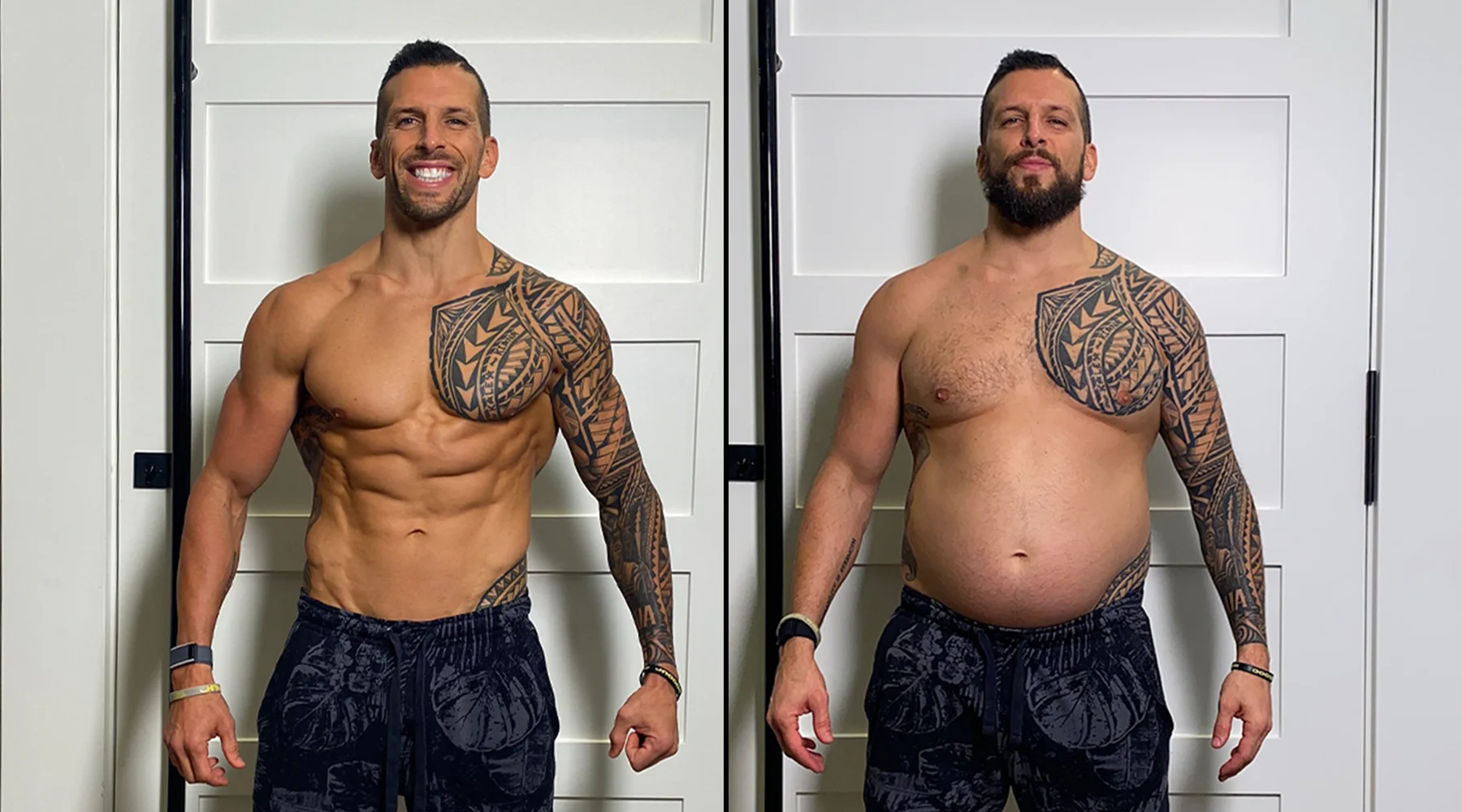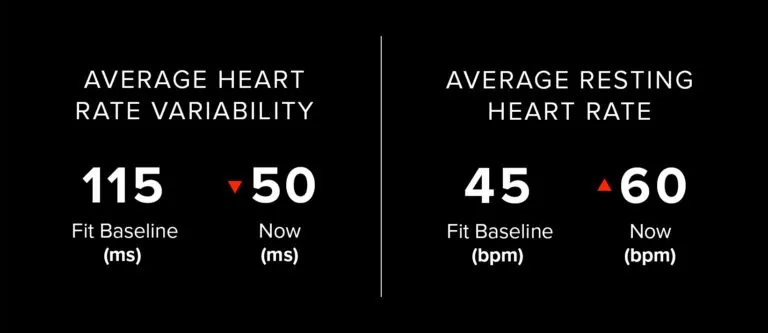Topics
- Article
- Health & Wellness
- Member Stories
- Nutrition
Fit to Fat to Fit: What I See in the Data

I'm intentionally gaining weight to help spread a message of empathy in the fitness industry, and tracking my body's physiological changes with WHOOP.
Back in 2011 I had this wild idea to get fat on purpose. It sounds crazy, right? Well it was! Before I get to it though, here’s a little background about me. I grew up in a family of 11 brothers and sisters (I was number 7). I played sports from the time I was a little kid, in particular football and wrestling. Because of that, I was always in good shape. I almost always had a six pack and was never overweight. I wasn’t someone who ever experienced food cravings or ate emotionally. For me, being in shape came pretty easily and that's all I ever knew. Fast forward to 2009 when I became a trainer. Here I was, someone who’d never been overweight a day in his life, trying to help many people who were overweight much of their lives. Obviously I couldn't comprehend why it was so hard for them to stay consistent with meal plans and workouts, because for me it had always been so easy. One day a client told me that I just didn't understand what it was like for him and for people like him. I took that to heart, and immediately started thinking of ways I could gain a new perspective and better relate to my clients. Then, like a light bulb going off in my head, this idea of getting fat on purpose and documenting it entered my mind. Almost immediately I felt like I was being called to do this.
The Fit to Fat to Fit Experiment
So to make a long story short, I decided to go on a journey and gain weight for 6 months, then walk the walk and lose it all over the course of the next 6 months. That meant no exercising for the first 6 months and a diet full of the Standard American Diet foods (white bread, white pasta, sugary cereals, sodas, granola bars, chips, cookies, crackers, frozen meals, mac n cheese, hot pockets, spaghetti o's, top ramen, etc). I ended up adding on 75 pounds in 6 months, but more importantly I gained a new outlook. I realized just how wrong I was in trying to help my clients with their meal plans, workouts, macros, calories, supplements, etc, when in reality they needed help more so on the mental and emotional side of transformation. The other main lesson I discovered was how powerful the emotional connection to food really is. I used to think it was just a lack of willpower and discipline until I undertook this journey. It was a huge struggle and I was surprised at how hard my own body fought against me to go after those cravings I was experiencing. My eyes were truly opened and this is where I started to develop empathy instead of judgment for those that struggle with their weight, or transformation in general. Luckily I was able to lose the weight and get back to my original body, but with a new understanding of the mental and emotional side of things. From there I wrote my first book, called Fit2Fat2Fit, which became a NY Times Best Seller, and created my own TV show on A&E called Fit To Fat To Fit.
Doing It All Over Again
I'm currently on my second Fit2Fat2Fit experiment, but this time it's different. It's about me trying to spread the message of empathy and the need for more of it in the fitness industry in particular, which is an industry that lacks empathy in my opinion. My hope is to bring awareness to this and to the importance of the mental and emotional side of transformation, which is not as easy as some people think it is. Plus, I'm turning 40 this year and decided to do it again to give people this age some hope that we can take care of our health even if it's harder as we get older (with our hormones and metabolism changing). This time around I’m also tracking so much more data. I want to make it more educational so people become more aware of just how living an unhealthy lifestyle can affect you in so many other ways besides simply gaining weight--mentally, emotionally, sexual health, finances, motivation, handling stress, relationships, memory, etc. Some of the metrics I’m tracking are things like my blood glucose levels (via a CGM), sleep and recovery (via WHOOP), memory, macros, calories, blood work, and sexual health/hormones.
Data Insights From the First Part of My Journey: HRV, Resting Heart Rate & More
One of the interesting things I’ve noticed so far while gaining weight is my lack of sleep, and that is showing up pretty clearly in my WHOOP data. Previously my recovery scores were generally anywhere from 75-95% (green) on average, but since I’ve started my journey they have dropped significantly to closer to 30-40%. My HRV (heart rate variability) was usually around 100, which led to really good recovery. Now, my average is somewhere around 50 or so.

weight gain has had a significant negative impact on both HRV and resting heart rate.
All of this data can help show people how living an unhealthy lifestyle and eating processed food can impact our mental and emotional capacity to handle other stresses in our lives, like kids, finances, relationships, business relationships and more. When we are sleep deprived we are in a constant state of “survival mode,” which then causes us to have a shorter fuse when dealing with stressful situations. This can cause us to be more reactive, less patient, grumpy, moody and irritable. It can also throw off our hormones and, for men, lower our testosterone, which leads to lower sex drive and other unpleasant side effects. This is why it’s so important for me to capture all of this data and help people become more aware and make these valuable connections to improve our overall health, not just physical health.
The Road Back
I'm inviting everyone to join me on my journey back to fit and to learn how to overcome these mental and emotional challenges as well, starting January 4, 2021. I'll hold your hand each step of the way and help with the physical, mental and emotional aspects of weight-loss transformation. People can follow along at fit2fat2forty.com or on all social media outlets at @fit2fat2fit.